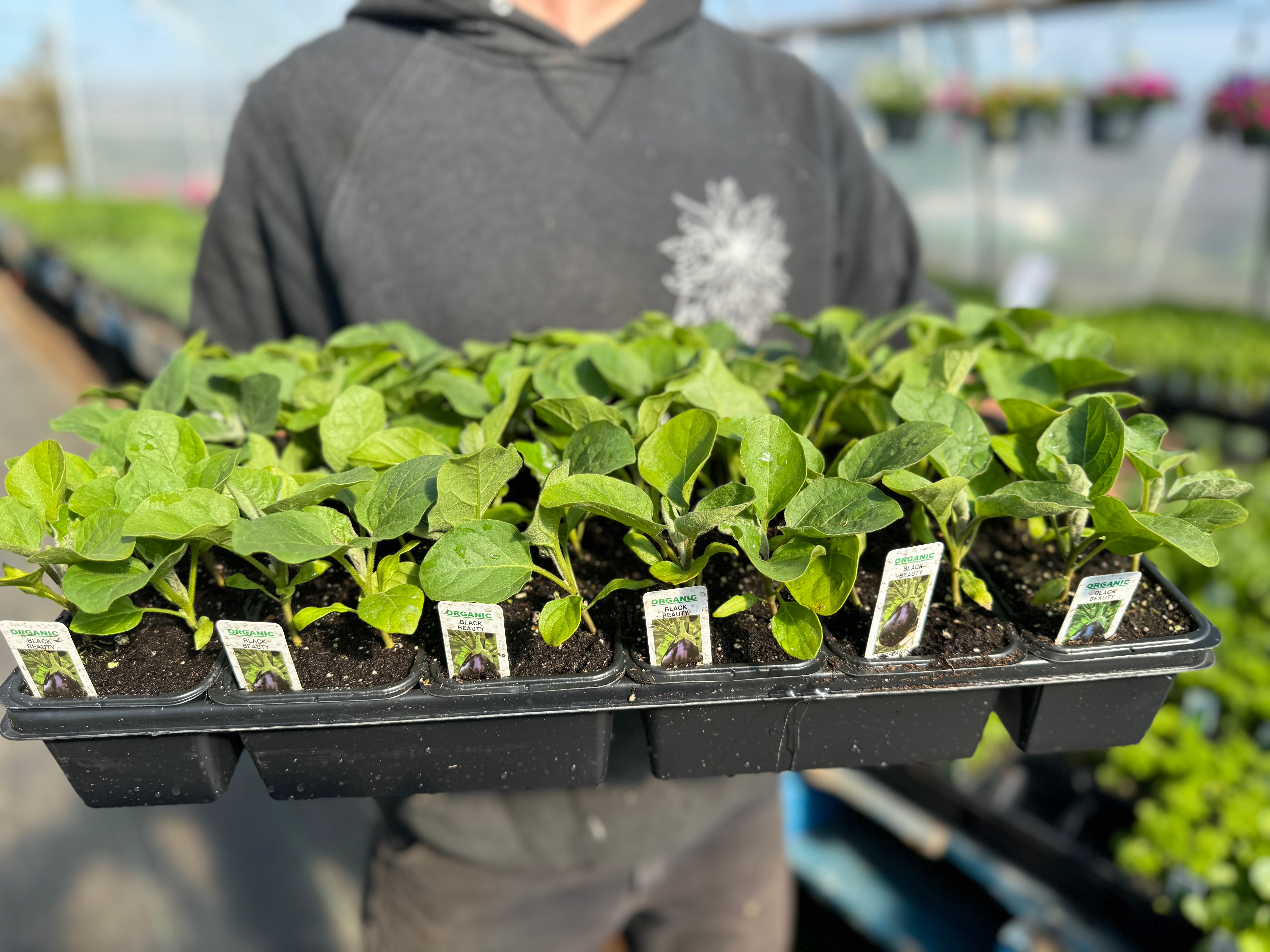



Eggplant Seedlings
Eggplant plants are bushy, upright plants that can grow to a height of 2-4 feet (0.6-1.2 meters). They have a central stem with branches that bear the leaves and fruit. The leaves are large, oval-shaped, and have a slightly fuzzy texture. The plant produces purple or white flowers that develop into the fruit. Eggplants are large, elongated fruits with a smooth, glossy skin. They can vary in size and shape, ranging from small and round to long and slender, depending on the variety. The flesh of the eggplant is creamy and has a mild, slightly bitter flavor. It is commonly used in cooking as a vegetable.
Tips on how to grow Eggplant:
1- Eggplants are warm-season crops that require a long growing season. Once the danger of frost has passed and the soil has warmed up, transplant your eggplant seedlings outdoors.
2- Choose a sunny location: Eggplants thrive in full sun, so select a spot in your garden that receives at least 6-8 hours of direct sunlight per day. The soil should be well-draining and rich in organic matter.
3- Prepare the soil: Before planting, prepare the soil by removing any weeds or debris. Eggplants prefer slightly acidic soil with a pH of 5.5-6.5. Incorporate compost or well-rotted manure into the soil to improve fertility and drainage.
4- Plant the seedlings: Dig holes in the prepared soil that are slightly larger than the root ball of the seedlings. Space the holes about 18-24 inches apart to allow for proper growth and airflow. Place each seedling in a hole and backfill with soil, firming it gently around the base of the plant.
5- Water thoroughly: After planting, water the eggplant seedlings thoroughly to settle the soil and ensure good root-to-soil contact. Keep the soil consistently moist but not waterlogged throughout the growing season.
6- Mulch and weed control: Apply a layer of organic mulch, such as straw or wood chips, around the base of the plants to help retain moisture, suppress weeds, and regulate soil temperature.
7- Provide support (if needed): Some eggplant varieties, especially those that produce larger fruits, may benefit from staking or trellising. If necessary, install stakes or cages around the plants to provide support as they grow.
8- Fertilize and maintain: As the eggplant plants grow, fertilize them with a balanced fertilizer according to the package instructions. Monitor for pests and diseases, and take appropriate measures to control them. Regularly harvest the eggplants when they reach the desired size and colour.


